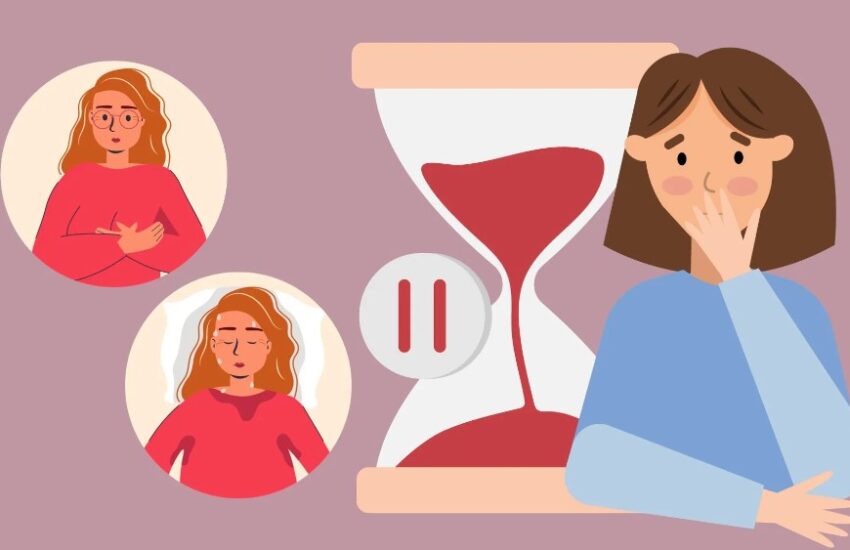Embarking on the journey through the various phases of menopause can be a uniquely challenging mission for women, marked by dizzying physiological changes that impact both their bodies and emotions. Central to this experience are perimenopause and menopause, stages often misunderstood and frequently conflated. Yet, understanding the nuances of each phase is essential for women to navigate their health effectively and confront this transition with confidence. In this comprehensive guide, we’ll delve deeply into these concepts, exploring their definitions, symptoms, stages, and management strategies. By clearly distinguishing between perimenopause and menopause, we’ll equip women with the knowledge they need to traverse this transformative period with grace and assurance, including insights into bioidentical hormone replacement in Canada
Understanding Perimenopause:
As the classic poet of women during menopause, perimenopause, also referred to as the menopausal transitional phase, signifies the initiation of changes in various aspects of the body that lead to actual menopause. It usually starts between 40 and 50 in women; however, some women may develop perimenopause in their late 30s. It can go on for a few years to even 10 years. Just the fact that during perimenopause the ovaries are less capable of producing enough estrogen ( the hormone that regulates the menstrual cycle) explains the irregular periods that occur during this phase of life.
uestioned feature mark of perimenopause is frequent and irregular menstrual cycles. Women may be prone to changes in the length, rhythm, and parameters of menstruation. Such disruption could be an early sign of less regular cycles, heavier or lighter intrusions, or even no period at all. Apart from these symptoms, frequent occurrences of hot flashes, night sweats, mood swings, vaginal dryness, and sleep abnormalities are usually experienced too.
Unlike ageing, perimenopause as a natural and inevitable stage of life is individual-specific; every woman could face its onset at a different time. Factors such as an individual DNA constitution, lifestyle, and general health can determine the age at which the menopausal transition starts as well as the length of this period. The fact is that women should point out the warning signs of perimenopause and find healthcare providers’ help to do their signs management successfully.
Understanding Menopause:
Menopause is the time when a woman’s menstrual cycle stops permanently and stops the childbearing stage hence remaining childless. Generally, it is set to a tone of age 51 years old, but the process may occur earlier or later than it may happen in different person per person. Menopause is a physiological phenomenon, but it may also be generated as a result of medical intervention for example surgery or the application the therapies like chemotherapy.
Like perimenopause, the symptoms of menopause include vasomotor, psychosocial, and physical changes but may be more apparent. Hot flashes, night sweats, mood swings, attacks of forcible tears and vaginal dryness bother women while they pass through menopause. Furthermore, women may occur girlhood of diverse health issues such as weight gain, loss of libido, urinary problems, and cognitive difficulties.
It is the reduction in the levels of the key hormone estrogen that will occur in menopause. Hence this hormonal change could lead to the occurrence of different kinds of diseases such as osteoporosis, cardiovascular disease and even mental health problems. With that being the case, the importance of health and wellbeing for women not just during, but also after menopause can’t be overlooked.
Key Differences:
While perimenopause and menopause share many similarities, there are key differences that distinguish these two phases: While perimenopause and menopause share many similarities, there are key differences that distinguish these two phases:
Timing:
Menopause comes in several steps: perimenopause (approximately between ages 40 and 45) and ensuing menopause. The latter signifies 12 months without menstruation under question.
Hormonal Changes:
In perimenopause, women undergo a state whereby estrogen levels vary which may lead to sporadic menstrual cycles and numerous symptoms. Unlike menopause, a major decrease in estrogen production causes the end of the menstrual period and more steel symptoms.
Duration:
Perimenopause can last for a few years, while menopause refers to the timeframe in which there are no periods for a consecutive 12 months every day.
Fertility:
Even if female patients are getting or close to the onset of menopause they may still experience pregnancy, although the level of likelihood decreases. From then onwards, a woman’s capacity to conceive biologically is obliterated.
Management Strategies:
Coping the symptoms of perimenopause and menopause helps ensure good quality of life and overall well-being in females. Hormone replacement therapy (HRT) is a popular approach to symptom management but it cannot be effective for everyone and it carries the risk of side effects. Moreover, non-hormonal remedies like workouts, and diet alteration, as well as alternative therapies just as acupuncture and herbal medicines can also be very useful.
Conclusion:
Perimenopause and menopause are the stages where women are edging closer to the end of the route to the reproductive period. Although many of these stages have a lot of similarities, the important point to understand apart from them is the key difference in knowledge and confidence. By alerting the early symptoms and stages of perimenopause and menopause, the woman can take the initiative steps that will help her manage her health and wellness advancement period. Women can now take charge of their health by involving healthcare providers and applying healthy life practices that will enable them to take up the phase with confidence and resiliency.

